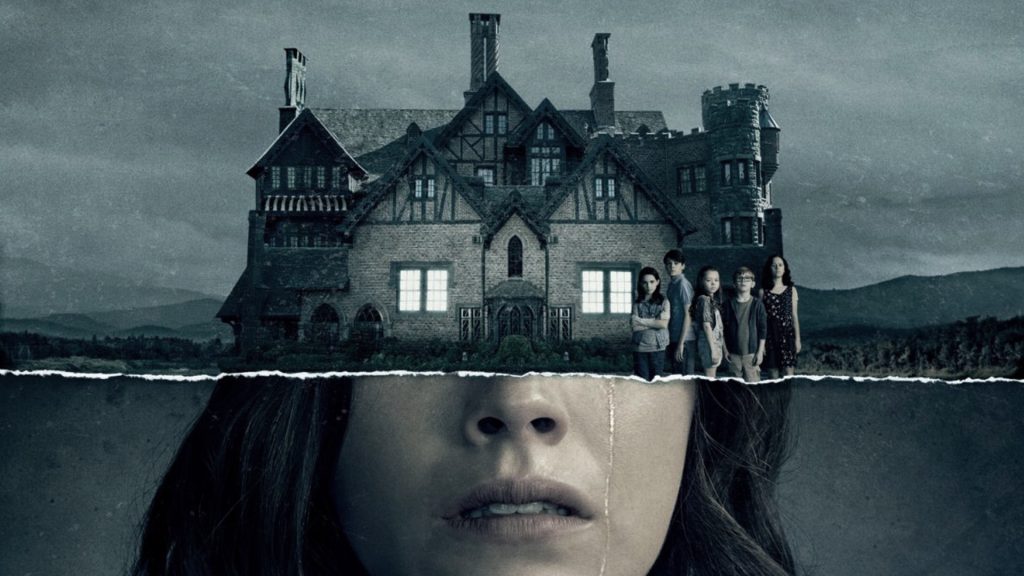The Haunting of Hill House is less of an exercise in horror as it is a psychological study on a family’s psyche and strained relationships.
Yes, there are ghosts and plenty of unsettling imagery, but at the end of the day, the show has more in common with This is Us than The Conjuring. The family focus also invokes echoes of the HBO classic, Six Feet Under.
It’s a well-done character study, and a surprisingly honest look at people tortured by mental illnesses. The Crain family arrive at the Hill House to renovate the premises and flip it for a profit in 1992, but a series of events rock their foundations to the core.
Some Ghosts are Different
“A ghost can be a lot of things,” explained Steve in the first episode, “A memory, a daydream, a secret. Grief, anger, guilt.”
Each of the characters are affected differently by these events. Nell (Victoria Pedretti) periodically sees an apparition she calls the Bent Neck Lady, and each time she is frozen in fear, reduced to whimpering sobs.
Theo (Kate Siegel), a super empath, prefers not to touch people and remain emotionally distant. Luke (Oliver Jackson-Cohen) has developed a drug habit in order to avoid his own visions, while elder siblings Shirley (Elizabeth Reaser) and Steve (Michiel Huisman) have tried to move on, although the book Steve wrote has torn a rift between the two.
Demons of their Own Making
The cast is very robust, and bear strong physical resemblances to each other and their younger counterparts. They make the restrained, gothic meditative pace of the show work to a great extent.
The director, Mike Flanagan, frames the show as a slow boiling drama, covering the darkly-lit hallways with only occasional glimpses of horrors.
The split timeline structure makes for good visual transitions, especially in the sixth episode, Two Storms, which contrasts the family dealing with two different storms in their past and present.
Of course, watching the show requires major suspensions of disbelief, such as why the Crains don’t leave the house after the children start encountering all kinds of weirdness. Nevertheless, the series generates legitimate unease with some moments, such as the mid-season ending that brought a mystery full circle, the tall specter in a bowling hat and other apparitions that haunt the Hill house.
There are other demons of their own making that plague the Crains, such as extra-marital affairs and the scars left from two familial suicides.
What’s great about the show is that these rifts are of the Crains’ own making.
Shirley’s controlling tendencies, Theo’s phobia of commitment, Hugh’s inability to let go of his wife and Nell’s grief-fueled spiral into oblivion were merely exacerbated by the events at Hill house. Furthermore, Steve, who wrote the book on these experiences, is the one who believes the least in their authenticity.
Dreaming Wide Awake
The heart of the show is formed by the mother, Olivia (Carla Gugino) and Nell. Olivia is constantly worried for her children, and her inability to let them grow and go out into the world is exploited by the house, which ultimately consumes her. Both Olivia and Nell ultimately fail to distinguish between reality and dreams, which leads to their undoing.
The show ends on a positive note, as the family confronts their past and discover the central mystery of the show: the Red Room, which always remained locked. The show, loosely adapted from the original 1959 novel, does leave possibilities for sequels, especially since the final episode revealed scores of ghosts occupying the house.
The Verdict
Overall, the show is a robust modern adaptation that stands out in a post-Conjuring landscape. It leaves a strong impression, and is a good companion piece for the original novel.
